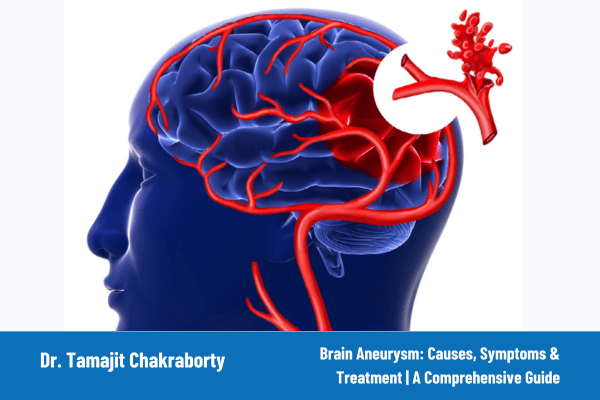The human brain, a complex and delicate organ, is responsible for controlling our thoughts, emotions, and bodily functions. However, certain conditions can pose a threat to its well-being. One such condition is a brain aneurysm. In this blog post, Best Neurosurgeon in Kolkata will explore what brain aneurysms are, their causes, symptoms, and available treatments.
Understanding Brain Aneurysms: A brain aneurysm is a bulging or ballooning of a blood vessel in the brain, often resembling a small sac or blister. It occurs when the arterial walls weaken, causing them to stretch and potentially rupture. This rupture can result in a life-threatening condition known as a subarachnoid hemorrhage, causing bleeding in the space surrounding the brain.
Causes of Brain Aneurysms: The exact cause of brain aneurysms remains unclear. However, certain risk factors increase the likelihood of developing one. These include family history (genetics), high blood pressure, smoking, drug abuse, trauma to the head, and certain medical conditions such as polycystic kidney disease and connective tissue disorders like Ehlers-Danlos syndrome.
Symptoms of Brain Aneurysms: According to Top Brain Aneurysm Doctor, Brain aneurysms often do not exhibit any noticeable symptoms until they rupture. However, when symptoms do occur, they may include severe headaches, neck pain, blurred or double vision, sensitivity to light, seizures, loss of consciousness, and cognitive difficulties. If any of these symptoms occur suddenly and are accompanied by a stiff neck, intense headache, or loss of consciousness, immediate medical attention is crucial.
Treatment Options: Early detection and treatment of brain aneurysms are crucial to prevent rupture and subsequent complications. Diagnostic tests such as computed tomography angiography (CTA) or magnetic resonance angiography (MRA) can help detect aneurysms. Treatment options include surgical clipping, where a tiny metal clip is placed around the aneurysm to stop blood flow, or endovascular coiling, a minimally invasive procedure where a catheter is used to place small platinum coils within the aneurysm to prevent rupture.
Prevention and Awareness: While it is not always possible to prevent brain aneurysms, adopting a healthy lifestyle can reduce the risk factors associated with their development. This includes managing blood pressure, refraining from smoking and drug abuse, and seeking immediate medical attention for head injuries or persistent headaches.
Conclusion: Brain aneurysms can pose a serious threat to an individual’s health and well-being. Understanding their causes, recognizing the symptoms, and seeking prompt medical attention are vital in managing this condition. By raising awareness, promoting prevention, and advancing treatment options, we can improve outcomes for those affected by brain aneurysms and work towards a healthier future. Remember, taking care of our brain health is as important as taking care of the rest of our body.
